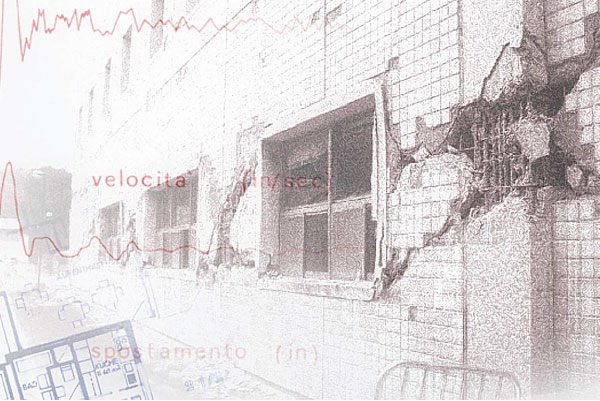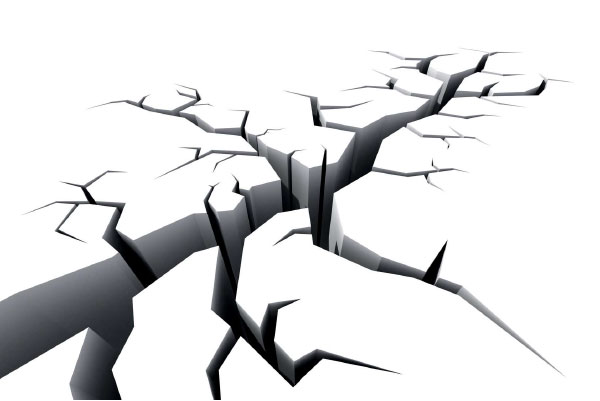MEDEA
Manual for Earthquake Damage Evaluation and safety Assessment for masonry and reinforced concrete buildings

What is Medea
The evaluation of the damage due to a seismic event on masonry or reinforced concrete buildings is a central problem inside the scientific community and one of the main factor for a post-event macroseismic assessment. Researchers attention is mainly focused on the identification of criteria and methods able to guarantee an objective evaluation, in order to find out the best correlation between the parameters measuring the seismic action and the damage.
At present many uncertainties and ambiguities exist either in the definition of the damage levels to assume or in the identification of the damage by the operators working in the survey. Moreover, during the post event emergency, the technicians always have to take decisions concerning the real safety of the buildings.
MEDEA (Manual for Earthquake Damage Evaluation and safety Assessment) is a dedicated software that offers interesting cues for an ‘objective’ evaluation of such damage. According to MEDEA, it could be possible to derive the most frequent damage typologies in masonry and reinforced concrete structures and a possible damaging model for quick and guided safety assessment. In fact, the damage assessment protocol is supported by forms where every damage type is described with notes, iconographic representations showing different damage levels, and possible links to their associated collapse mechanisms. This helps to reduce the level of uncertainty in the assessment of safety during the survey. It contains a technical glossary, a picture archive and a section describing seismic damage analyses, which are also linked to compatible collapse mechanisms. It also contains a section on virtual reality examples of damage surveys and safety evaluations.
MEDEA is therefore mainly addressed to the technicians either involved in vulnerability assessment or employed in post event macroseismic evaluation. In both cases the uniqueness of the judgment of the surveyors is very important, because of the scientific aspects resulting from a standard damage measure (useful for the improving of the vulnerability function on one hand, and for a bigger harmonization in defining macroseismic fields on the other) and for the social aspects concerning the civil protection deriving from reliable damage estimation and static safety evaluation.
In addition MEDEA has showed to be an interest- ing teaching tool for university courses in the field of seismic engineering or emergency management.
How to activate Medea agreement
1. Per attivare la convenzione è necessario in primis inoltrare richiesta di accreditamento attraverso il form sottostante, avendo cura di compilare i campi richiesti.
2. Una volta verificati i requisiti, PLINIVS procede all’accreditamento del soggetto richiedente mediante la creazione di account, le cui credenziali di accesso sono comunicate via mail al soggetto richiedente.
3. In seguito è possibile per il soggetto richiedente effettuare l’accesso a questa sezione e scaricare il documento di convenzione, che va compilato in tutte le sue parti e firmato.
4. L’ultimo passaggio consiste nel caricamento della convenzione compilata e firmata all’interno della sezione Carica/Scarica Convenzione. Una volta inviata la convenzione, la procedura è conclusa.
DPC Services
PLINIVS Study Centre provides dedicated services to the Italian Department of National Civil Protection, as a Competence Center established by Decree of the Head of Department of Civil Protection n. 1922 May 15, 2006 (link to the updated version of the Decree)
Main tasks and functions:
- Research on topics related to vulnerability, risk and impact assessment on the elements of the territory exposed to different hazards, such as earthquakes, volcanic eruptions, hydrogeological events, etc., as well as in the area of mitigation of the effects on humans and on built environment.
- Collection of data relating to building structures in areas exposed to volcanic phenomena (earthquakes, pyroclastic flows, ash fall, lahars, tsunamis, etc.) and the development of impact assessment methodologies and tools.
- Development of damage mitigation techniques for population and building structures to seismic, volcanic and hydrogeological events.
- Economic impact assessments of seismic, volcanic and hydrogeological events.

DPC Services
Requires login credentials.

